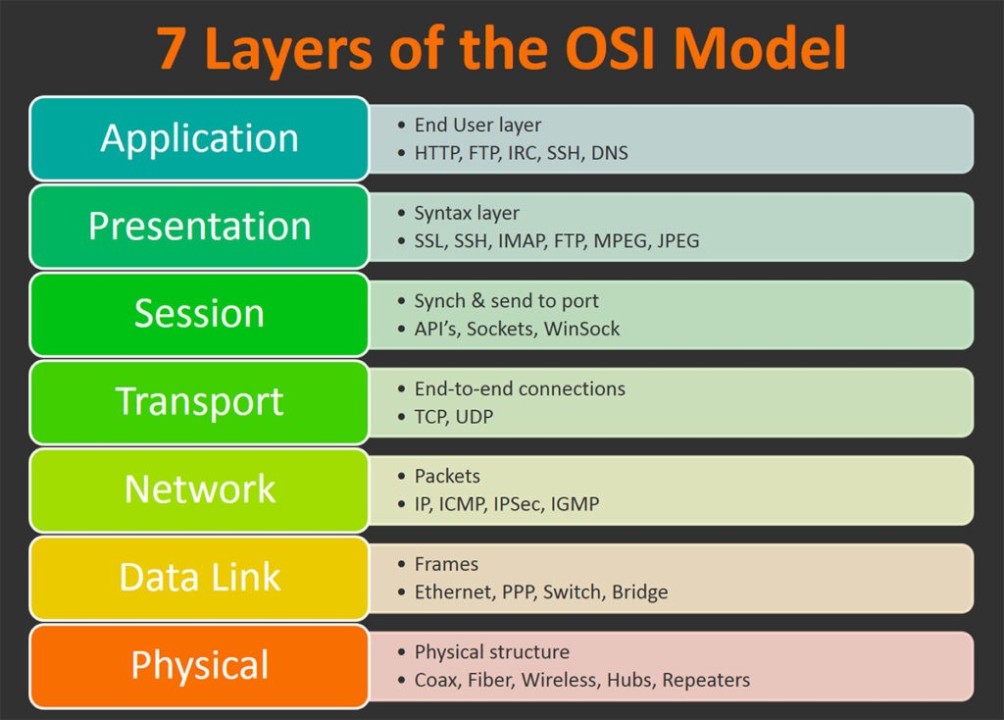Mastering the OSI Model: Understanding the Layers of Computer Network Communication
The OSI (Open Systems Interconnection) model is a conceptual framework used to understand and standardize the functions of a telecommunication or computing system. It divides network communication into seven layers, each responsible for a specific aspect of network communication. These layers, from the bottom up, are:
1.Physical Layer:
This layer deals with the physical connection between devices. It defines the electrical, mechanical, and procedural standards for transmitting raw data bits over a physical medium, such as cables or wireless signals.
2.Data Link Layer:
This layer is responsible for node-to-node communication, ensuring that data is delivered error-free between adjacent nodes. It typically includes protocols for framing, error detection, and flow control. Ethernet and Wi-Fi are examples of data link layer technologies.
3.Network Layer:
This layer manages routing and forwarding of data packets between different networks. It determines the optimal path for data to travel from the source to the destination across multiple network segments. IP (Internet Protocol) is the primary protocol used at this layer.
4.Transport Layer:
The transport layer ensures that data is delivered reliably and efficiently across the network. It provides mechanisms for error detection, flow control, and retransmission of lost or corrupted data. TCP (Transmission Control Protocol) and UDP (User Datagram Protocol) are common transport layer protocols.
5.Session Layer:
This layer establishes, manages, and terminates connections between applications. It handles session setup, synchronization, and teardown, allowing applications on different devices to communicate with each other. Examples of session layer protocols include NetBIOS and SSH (Secure Shell).
6.Presentation Layer:
The presentation layer is responsible for data formatting, encryption, and compression. It ensures that data exchanged between applications is in a format that both the sender and receiver can understand. This layer also handles data encryption and decryption for secure communication.
7.Application Layer:
The application layer enables communication between end-user applications and the network. It provides high-level services such as email, web browsing, and file transfer. Protocols like HTTP (Hypertext Transfer Protocol), SMTP (Simple Mail Transfer Protocol), and FTP (File Transfer Protocol) operate at this layer.
The OSI model provides a structured way to understand and design network systems, with each layer building upon the functions provided by the layers below it. While the OSI model serves as a reference model, real-world network protocols often don't strictly adhere to its seven-layer architecture, but it remains a valuable tool for understanding network communication concepts.

Comments
Post a Comment